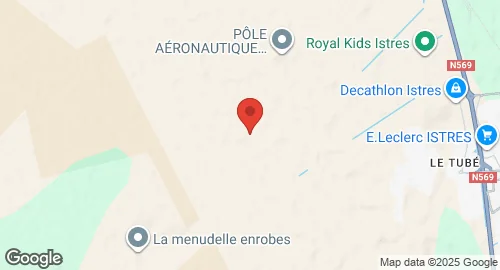Base aérienne 125 Istres-Le Tubé (Sous-Lieutenant-Monier)
Summary
| Operating Country | 🇫🇷 France |
| Location | 🇫🇷 France |
| Status | ◉ Active |
| Usage | Military only |
| Year built | 1917 |
| Operating Organization | French Air and Space Force |
| Units |
|
Description
Base aérienne 125 Istres-Le Tubé, officially named « Sous-Lieutenant-Monier », is the largest air base of the French Air and Space Force. It is located in the commune of Istres in the Bouches-du-Rhône department, France. The base is one of the oldest in France, with an aviation school established in May 1917, making it an important training center. The base played a role in the Algiers generals' putsch in 1961, with officers departing from Istres to join the conspiracy. Since 1945, it has been a key location for the Strategic Air Forces (FAS), with the Flight Test Center (CEV) also deployed there. In 1992, it served as an emergency landing site for Trans-Air Service Flight 671 following engine failure. The base has also been selected for projects like Stratobus and hosted joint exercises such as Garuda IV with the Indian Air Force. It houses major units of the Strategic Air Forces, including the 31st Strategic Refueling and Transport Air Wing, activated in August 2014. Other units include the 4/31 Sologne In-Flight Refueling Squadron, the 1/31 Bretagne In-Flight Refueling and Strategic Transport Squadron, their associated technical support squadrons (15.093 and 15/31 Camargue), the 01.950 « Crau » Ground-Air Defense Squadron, the Flight Test and Reception Aircrew School of the Directorate General of Armaments, and the 1.G 125 Protection Squadron. The base is notable for its physical characteristics, covering 2,500 hectares, hosting approximately 5,000 personnel, and featuring a 5,000-meter concrete runway, which is the longest in Europe. This runway, extended in 1992 for Airbus Industrie, is equipped for tests and repairs, serving as a flight test base for the French Air and Space Force, Naval Aviation, and French aerospace manufacturers. It is also connected to the NATO Central Europe Pipeline System for aviation fuel supply. Due to its safety equipment and runway length, it has been used for emergency landings of civilian aircraft and, until the Space Shuttle's retirement, was one of the few air bases outside the United States equipped for Transatlantic Abort Landing procedures.
